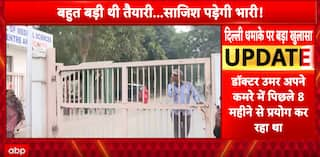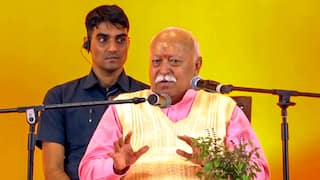Explorer
Budget 2019: Glance at revolution in banking sector during Modi government's tenure
In the past five budgets, the Ministry of Finance has introduced a plethora of innovations and developments for the Indian banking industry.

FM Arun Jaitley is expected to introduce more banking reforms. (Image: PTI)
Budget 2019: In the past five budgets, the Ministry of Finance has introduced a plethora of innovations and developments for the Indian banking industry. The Indian Banking Sector has gone through a paradigm shift in the Modi Era since May 2014. The government’s push for making India a less-cash economy and digitalization has brought transparency in the banking industry. The government’s decision to link Aadhaar UID with PAN card and Bank accounts has spearheaded a movement of sorts to curb black money besides impacting disbursal of loans and other financial transactions and direct transfers of subsidies in the accounts of the beneficiaries.
The launch of various schemes like the Prime Minister Jan Dhan Yojana (PMJDY), setting up of India Post Payments Bank (IPPB) and Point of Sale (PoS) terminals in villages increased the penetration of banking services in rural India, while MUDRA extended financial support to MSMEs.
As of 2018, the Indian banking sector comprises of 27 public sector banks, 21 private sector banks, 49 foreign banks, 56 regional rural banks, 1,562 urban cooperative banks and 94,384 rural cooperative banks apart from other cooperative credit institutions. With going digital at the core of BJP led central government, India enjoys being the only Immediate Payment Service (IMPS) system in the Faster Payments Innovation Index (FPII) at Level 5 amongst 25 other nations.
The growth of Point of Sale (PoS) terminals post Demonetization in November 2016 saw setting up of additional 1.25 million PoS by end of 2017 as compared to 1.52 million in November 2016. Furthermore, e-wallets and digital payment banks have spurred since November 2016 and have inculcated digital transactions as a habit amongst Indians.
As per Indian Banks’ Association, 80 per cent of the banking transactions in newer banks is carried on mobile and digital platforms. Demonetisation also led to an increase in deposits while the credit loans almost remained stagnant. A lower credit-deposit ratio led to depleted net interest income of banks.
India’s retail credit system is the fourth largest amongst the emerging countries, however, the country’s banking sector has been marred with Non-Performing Assets (NPAs). The public sector banks take a larger pie in the NPAs as compared to private players. The public sector banks own 70% of the Indian banking asset base, while private sector banks account
to 25% followed by 5% of foreign banks.
In the past 5 years, the Finance Ministry has injected lakhs of crores to recapitalize the capital deficient public sector banks. In Budget 2018, the BJP government allocated Rs.88,000 crore for 20 state-owned banks to up their credit lending. The FM chalked out a plan to use recapitalization bonds year on year to boost the ailing public sector banks.
“Our role really is not only to find a solution but also to create an institutional mechanism to make sure that what happened in the past is not repeated. Now the entire objective of this exercise is that the government has the prime responsibility of keeping the public sector banks in good health,” the FM had stated days before Budget 2018, last year.
Ahead of Budget 2019, the Finance Ministry gave its nod for recapitalisation of Exim Bank of India to increase authorised capital from Rs.10,000 crores to Rs.20,000 crores. In his sixth and last budget ahead of General Elections 2019, FM Arun Jaitley is expected to introduce more banking reforms and restructuring plans with prowess.
Follow Business News on ABP Live for more latest stories and trending topics. Watch breaking news and top headlines online on ABP News LIVE TV
Read more
Advertisement







































